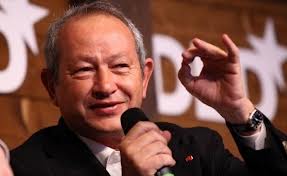Egyptian squash players fare well internationally, but where are the rewards?
CAIRO: Egyptian squash has never seen a year quite like this one. In April, Amr Shabana became the world’s number one player, the first Egyptian to reach the pinnacle of the sport.
Last month, Shabana’s countrymen also attained heady heights. Ramy Ashour became the first man ever to win two consecutive world junior titles, defeating compatriot Omar Mosaad in straight games.
Three days later, in the men s world junior team squash championship, Egypt beat Pakistan 2 to 1 in the final.
All these victories have propelled Egyptians to the forefront of the sport. In the present men’s world rankings, there are two Egyptians in the top 10, four in the top 20, six in the top 50 and 10 in the top 100.
Egyptian women have not faired quite as well, but are still performing notably well in the top 100. Omneya Abdel-Qawy is ranked number nine in the world. She leads six other Egyptians, the last being in slot number 91.
Egyptian success in squash is most interesting when you consider the disadvantages. It’s expensive. In addition to the equipment, it requires glass courts that are found mostly in clubs in which you have to be a member but like most Egyptians, you probably are not. And if you can plant your feet on a court, there is rent to pay to play.
It’s not for those seeking fame. There is a yawning lack of interest from the national media and the same indifference from the public. BBC online does not list squash along with football, rugby and cricket, but classifies it with “other sports along with darts, which I have nothing against, and net ball, which I didn’t know existed.
If Shabana were to stand in the middle of Tahrir Square at midday, only about three passers-by would know who he was (one of them would have to be his mother).If you asked 100 people in Tahrir Square at midday who Shabana is, only about three passers-by would know (one of them would have to be his father).
If you put Shabana in the middle of Tahrir Square at midday in shorts, holding a squash racket and smacking a squash ball against a squash wall, only about three passers-by would know what sport he was playing (one would have to be his sister).
It’s certainly not for athletes looking to be millionaires. When Shabana won the world championship in Pakistan in 2004, he received a check worth $25,000, of which the Islamabad government took 30 percent in taxes while seven percent went to the Professional Squash Association.
Compare that with the men’s prize money at Wimbledon that year: $1,095,074. The 2004 ladies singles champion pocketed $1,017,828. The complete 2004 purse: $17,643,473.In fact the over 100 professional squash events per year combined are valued at $1.6 million.
So little money, even less fame, and a lot of work.
When he was 19, the retiring former world number one Peter Nicol would put in about six hours hard training every day. How hard?
I d get up at 6:30 in the morning and go for a run before breakfast. Then I d do a solo practice for 45 minutes on the courts, followed by a couple of hour sessions with my coach and other players.
At the end of that session we d do some physical training, circuits or something.
After lunch I d do weights, probably playing a match beforehand, or do some interval work, and then stretch. I d finish with some press-ups and sit-ups.
Then I d get up and do the same thing again the next day, he concluded.
All this, in pursuit of success in a sport that provides very modest rewards, all because of squash.
